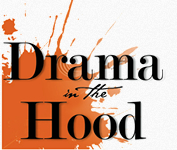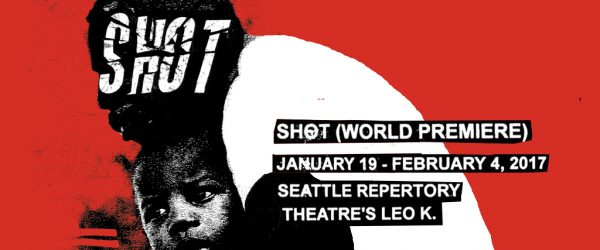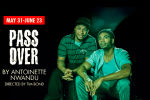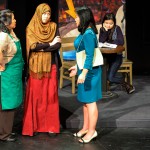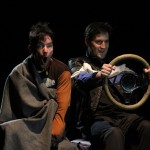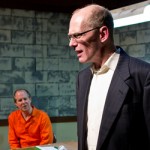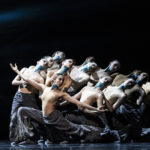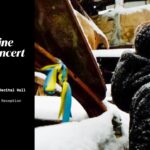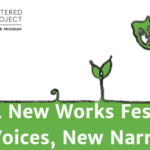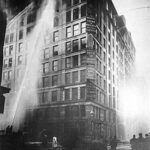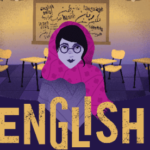World Premiere
“Not everything that is faced can be changed, but nothing can be changed until it is faced.” ~ James Baldwin
Law enforcement officers—police officers—now have an infamous reputation for killing unarmed people of color of all ages and genders. This s not new, of course, essayist James Baldwin wrote about it decades ago, and comedian Richard Pryor joked about police accidentally “breaking” black suspects by using the illegal strangle hold. But the murder of Michael Brown and the spontaneous birth of Black Lives Matter has held a spotlight on this problem unlike any attention paid to it before now.
Genius artist Executive Artistic Director Donald Byrd brings this indisputable challenge of American life to the stage at the Leo K. Theatre at Seattle Rep. He brings it with dance, of course, because he works with Spectrum Dance Theatre. He brings it with spoken word, as his company speak and talk. He brings it to our faces.
This is the first of 3 World Premiere productions included in Spectrum’s 2016-2017 season—AMERICAN: Race, Identity or Culture? They all deal with seemingly intractable issues: Shot, the subject of this review deals with police shootings of unarmed black people, Rambunctious Iteration #3, returns by popular demand in March to explore the music of Immigrant-American classical composers; and (Im)Pulse, in July, is a world premiere dramatic dance-theater response to the Orlando Pulse Nightclub tragedy and the ongoing aggression towards LBGTQ people.
Byrd calls these world premieres “theater of disruption” and it is not being produced anywhere else. It’s not a comfortable experience for the audience, and this is his intent.
How the news reaches us with its quick reports and the rush for soundbites in time for the evening newscast doesn’t help citizens face a situation. As Byrd is using the space of the stage and the amazing abilities of his company to explore intractable issues, disruption and discomfort will be felt in the audience, but different members may feel different unease for different reasons.
Byrd/Spectrum held our attention to witness these incomprehensible murders—from the beginning line-up of the dancers who quickly establish “hands-up” as a one motif for the performance, to the closing line-up again while the sad and regrettable and preventable murder of Keith Lamont Scott was projected on the backdrop. Rakeyia Scott shot the video with her smart phone while trying to inform the police the her husband did not have a gun. Rakeyia Scott is heard pleading for her husband’s safety and trying to defuse the situation.
Byrd said in the program notes: “Of all the videos of police shootings I have seen, my response to the one by Rakeyia Scott, though not the most disturbing, shocking or damning, was for me the most affecting.” Byrd wrote that from watching this video it hit him “suddenly like a ton of bricks” that “this man who had just been shot was a husband, a father, somebody’s son and someone loved. His death would bring grief and sorrow for those who shared his life.”
Using video clips, some apparently body-cams on police officers, excellent music by Jaimeo Brown and Julius Eastman, and the full expressive talents of the Spectrum company over and over again we feel the humanity of these murdered fellow humans through dance.
Plus, the dancers speak! It’s almost back to the origins of theatre in Greece where choruses spoke to each other and the audience, before the refinement of having separate actors. But it’s a dance company, so there’s lots of repetition, even of the spoken parts. As I listened to the repeated line, “Please, Stop. Don’t Shoot!” it began to sound like “Police, Stop. Don’t Shoot!”
As company member Nia-Amina Minor repeated Rakeyia Scott’s words, sometimes alone facing the audience, sometimes with dancers sharing the space, it becomes an echo chamber of awareness. This is one of the strengths of dance, which it shares with music, once a theme is brought forward it can be repeated, varied, expressed as a solo, duo, trio, or by the whole ensemble.
The first act addressed the general pattern of these killings using dance. Byrd did not program a traditional intermission. Instead, he stepped out from the wings and gave a talk about—”The Talk.” The Talk used mean to talk with ones children about sex, now, especially, for parents and guardians of young black men, The Talk is centered on how to survive alive encounters with police, who are most likely white. Byrd had 10 points parents might share. The first three were: “stay calm,” “keep your hands visible,” and “shut up.” You’ll have to see the show to hear the rest of them.
The second act gave every member of the company front and center space and time to dance a type of memorial to many of the black people killed since Michael Brown’s murder on August 9, 2014. Some of these were solos, others were duets or larger combinations. All were expressive and sincere. In the post show talkback, members of the company shared the depth of research they undertook to prepare these segments.
Also during the talkback Byrd stated that artists have a vital role in society and need to be at the table when these issues are discussed. This is because artists think creatively, and what exists now is neither creative nor a solution to anything. The Legislature last session created a “table” or as it is officially named, the Use of Deadly Force in Community Policing, Joint Legislative Task Force. Though the Task Force did pass recommendations to change the state law towards a more objective standard for evaluating the use of deadly force by police, it had at least 7 members representing various elements of law enforcement and zero artists. Reminding our representatives to expand their idea of who needs to be at the table might be a way to move from intractable conflicts … to tractable agreements … to solutions.
The Company: Alex Cozier | Blair Jolly Elliot | Paul Giarrantano | Nia-Amina Minor | Robert Moore | Madison Oliver | Alexander Pham | Emily Philaja | Andrew Pontius | Fausto Rivera | Mary Sigward | Lena Silverman | Jaclyn Wheatley | Sherman D. Wood
Production Team: Donald Byrd, Choreography and Direction | Jack Mehler, Lighting and Scenic Design | Rob Wilmer, Sound Design | Travis Mouffe, Project Design | Doris Black, Costume Design | Sara Torres, Stage Manager
Shot by Spectrum Dance Company + Donald Bryd. Runtime: 85 minutes, no intermission. Seattle Repertory Theatre, Leo K. Theatre, 155 Mercer St, Seattle, 98109. 7: 30 PM Thurs – Sat; 2 PM Sun. Tickets: seattlerep.org/Buy/Tickets/Production/6300 Info: https://www.seattlerep.org/ or (206) 443-2222. Runs Jan 19 – Feb 4.
Comments:
Thank you for your words and insights.” Donald Bryd
